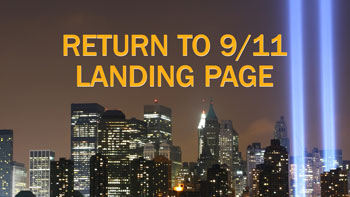Timeline: The September 11 terrorist attacks
The day that defined the beginning of the 21st Century for Americans
On September 11, 2001, 2,977 people were killed in the deadliest terrorist attacks in American history.
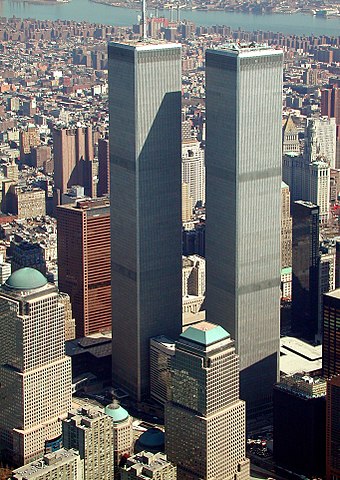
The moment shocked the nation. Two planes, hijacked by Islamic jihadists vowing death to all Americans, plowed into both towers at the World Trade Center in New York. Another plane was flown into the Pentagon in Washington, DC. A fourth plane, presumably headed for the White House or the U.S. Capitol, was heroically diverted by passengers and ended up crashing in an empty field in Pennsylvania. After reports of the first plane hitting the North Tower, millions watched the second plane hit the South Tower on live television.
It was a terrifying, startling, and humbling event for the country. The 9/11 attacks were the deadliest on American soil since the shock attack at Pearl Harbor 60 years before, and the sense of outrage was reminiscent of that moment. The attacks in New York occurred in the country’s busiest city on a busy workday. And the staggered nature of the attacks meant that news footage captured almost everything as it happened, ensuring that millions of Americans saw the events precisely as they unfolded.
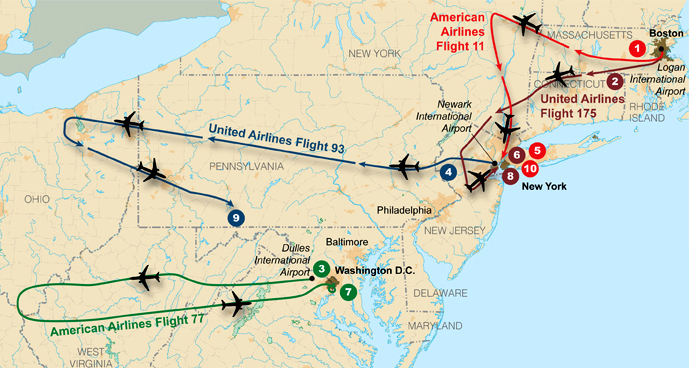
Timeline
September 11, 2001
5:45 AM – Mohamed Atta and Abdul Aziz al-Omari, two of the intended hijackers, pass through security at the Portland International Jetport in Maine. They board a commuter flight to Boston Logan International Airport, they then board American Airlines Flight 11.
7:59 AM – Flight 11 takes off from Boston, headed for Los Angeles, California. There are 76 passengers, 11 crew members, and 5 hijackers on board.
8:15 AM – United Airlines Flight 175 takes off from Boston, also headed for Los Angeles. There are 51 passengers, 9 crew members, and 5 hijackers on board.
8:19 AM – A flight attendant on Flight 11, Betty Ann Ong, alerts ground personnel that a hijacking is underway and that the cockpit is unreachable.
8:20 AM – American Airlines Flight 77 takes off from Dulles, outside of Washington, DC, headed for Los Angeles. There are 53 passengers, 6 crew members, and 5 hijackers on board.
8:24 AM – Mohamed Atta, a hijacker on Flight 11, unintentionally alerts air controllers in Boston to the attack. He meant to press the button that allowed him to talk to the passengers on his flight.
8:37 AM – After hearing the broadcast from Atta on Flight 11, Boston air traffic control alerts the US Air Force’s Northeast Defense Sector, who then mobilize the Air National Guard to follow the plane.
8:42 AM – United Flight 93 takes off from Newark, New Jersey, after a delay due to routine traffic. It was headed for San Francisco, California. There are 33 passengers, 7 crew members, and 4 hijackers are on board.
8:46 AM – Flight 11 crashes into the World Trade Center’s North Tower. All passengers aboard are instantly killed, and employees of the WTC are trapped above the 91st floor.
9:03 AM – Flight 175 crashes into the WTC’s South Tower. All passengers aboard are killed instantly and so are an unknown number of people in the tower.
9:05 AM – President George W. Bush, in an elementary school classroom in Florida, is informed about the hit on the second tower. His chief of staff, Andrew Card, whispers the chilling news into the president’s ear. Bush later wrote about his response: “I made the decision not to jump up immediately and leave the classroom. I didn’t want to rattle the kids. I wanted to project a sense of calm… I had been in enough crises to know that the first thing the leader has to do is to project calm.” (Miller Center)

9:28 AM – Hijackers attack on Flight 93.
9:37 AM – Flight 77 crashes into the Pentagon. All passengers aboard are instantly killed and so are 125 civilian and military personnel in the building.
9:45 AM – US airspace is shut down under Operation Yellow Ribbon. All civilian aircraft are ordered to land at the nearest airport.

9:55 AM – Air Force One with President George W. Bush aboard takes off from Florida.
9:57 AM – Passengers aboard Flight 93 begin to run up toward the cockpit. Jarrah, the pilot, begins to roll the plane back and forth in an attempt to destabilize the revolt.
9:59 AM – The South Tower of the World Trade Center collapses.

10:02 AM – Flight 93 plows into an empty field in Shanksville, Pennsylvania. Although its ultimate target is unknown, it was likely heading for either the White House or the US Capitol.
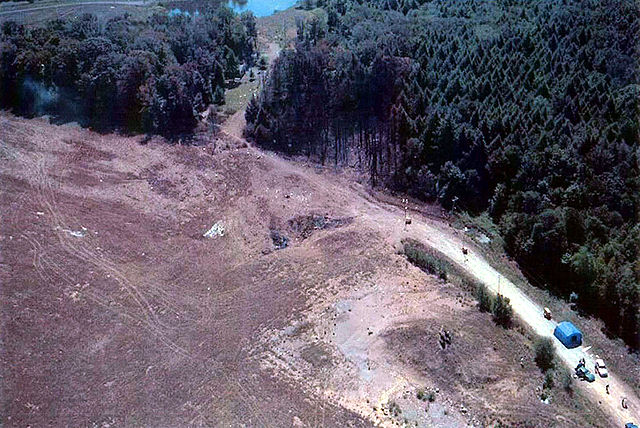
10:18 AM – President Bush authorizes any non-grounded planes to be shot down. At that time, all four hijacked planes had already crashed but the president’s team was operating under the impression that Flight 93 was still in the air.
10:28 AM – The North Tower of the World Trade Center collapses.
10:53 AM – Secretary of Defense Donald Rumsfeld orders the US military to move to a higher state of alert, going to DEFCON 3.
11:45 AM – Air Force 1 lands at Barksdale Air Force Base near Shreveport, Louisiana.
12:15 PM – Airspace in the United States is completely free of all commercial and private flights.
1:30 PM – Air Force 1 leaves Barksdale.
2:30 PM – Rudy Giuliani, the mayor of New York City, visits the fallen Twin Towers of the World Trade Center at what becomes known as Ground Zero.
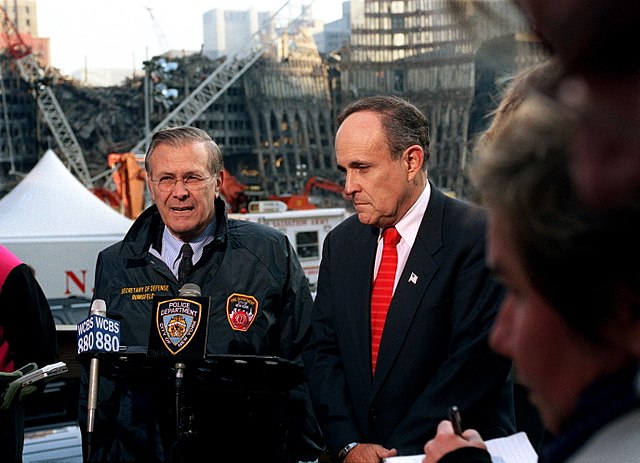
3:00 PM – Air Force 1 lands at Offutt Air Force Base in Nebraska, and President Bush is immediately taken to a secure bunker that is capable of withstanding a nuclear attack.
4:30 PM – Air Force 1 leaves Offutt and heads back toward Andrews Air Force base near Washington, DC.

5:30 PM – Building 7 of the World Trade Center collapses.
8:30 PM – President Bush addresses the nation.
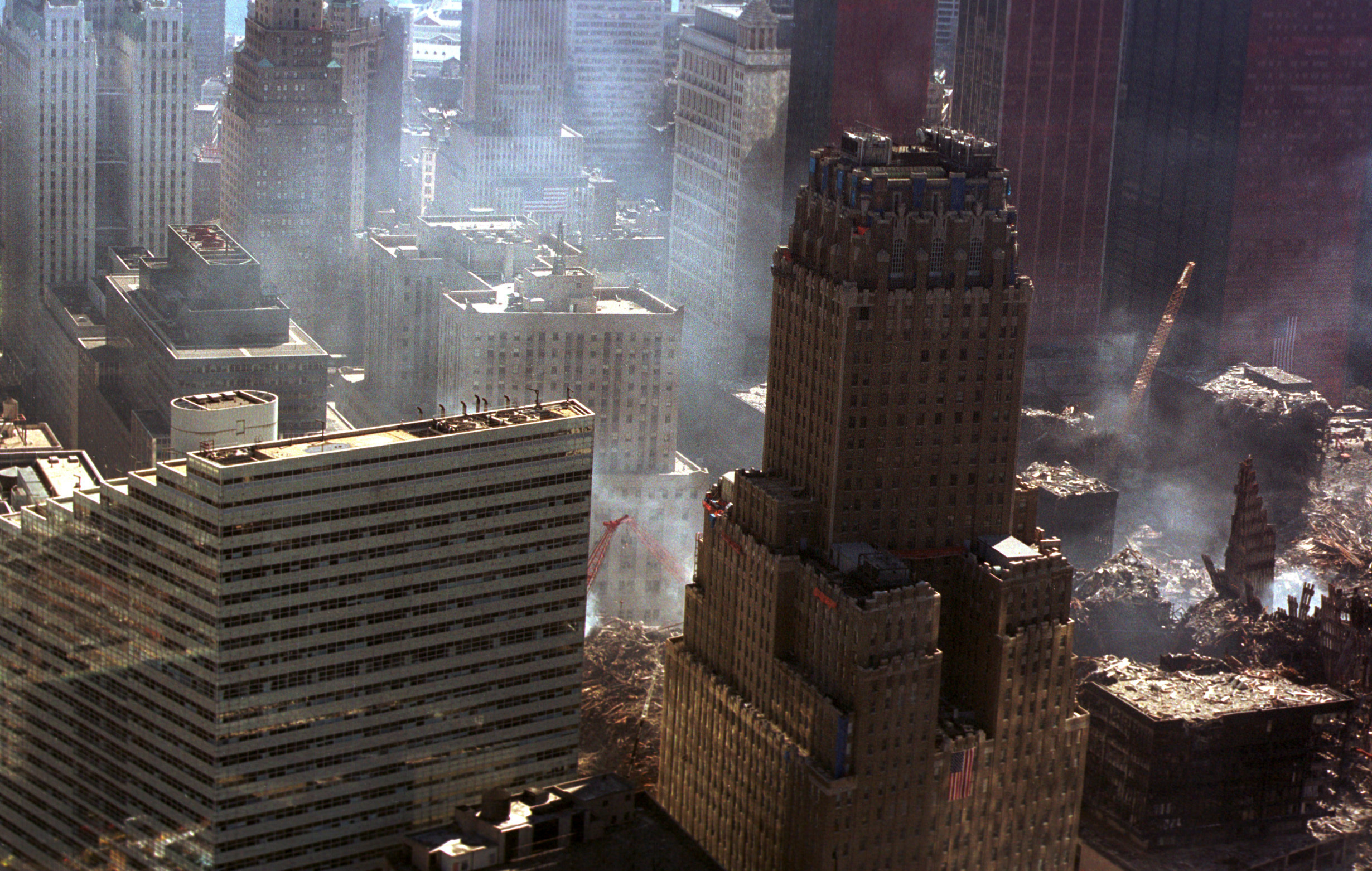
Background
Although to many Americans 9/11 seemed like a random act of terror, the roots of the event had been developing for years. A combination of factors that coalesced in the late 1990s led the catastrophic event. These factors included regional conditions in the Middle East that motivated the perpetrators, as well as intelligence lapses and failures that left the United States vulnerable.

Osama Bin Laden was relatively unknown in the United States before 9/11, even as he was amassing popularity, followers, and fame in the Middle East during the 1990s. In 1988, he was one of the founders of al Qaeda, a militant Islamic terrorist organization that organized and carried out the 9/11 attacks. Bin Laden called for indiscriminate killing of all Americans who, he claimed, were “the worst thieves in the world today” (9/11 Report, page 47). It was the perfect historical moment for that rallying cry.
Throughout the 20th century, a wave of secular, nationalist revolutions swept through the Middle East, taking root in Egypt, Libya, Iraq, Yemen, and other countries. While these movements were awash in promising ideology, the new regimes quickly became autocratic and suppressed dissent. Their critics turned to violent revolution to express their dissatisfaction with the secular governments.
At the same time, social malaise, especially among young men who were struggling to find decent jobs and start their own families in corrupt oil states, provided easy targets for radicalization. Bin Laden’s message that America was the “head of the snake” and the root of all society’s problems resonated well with the discontent.
By the mid-1990s, Bin Laden was the head of al Qaeda, a multifaceted and highly developed terrorist network carrying out attack after attack on Americans in the Middle East. It was a new type of terrorism to which the US intelligence agencies struggled to adapt. Much of the intelligence community had not even imaged the specific type of hijacking and terrorism carried out on 9/11. They were preparing for threats such as the 1993 bombing of the World Trade Center and bombing in 2000 of the USS Cole.
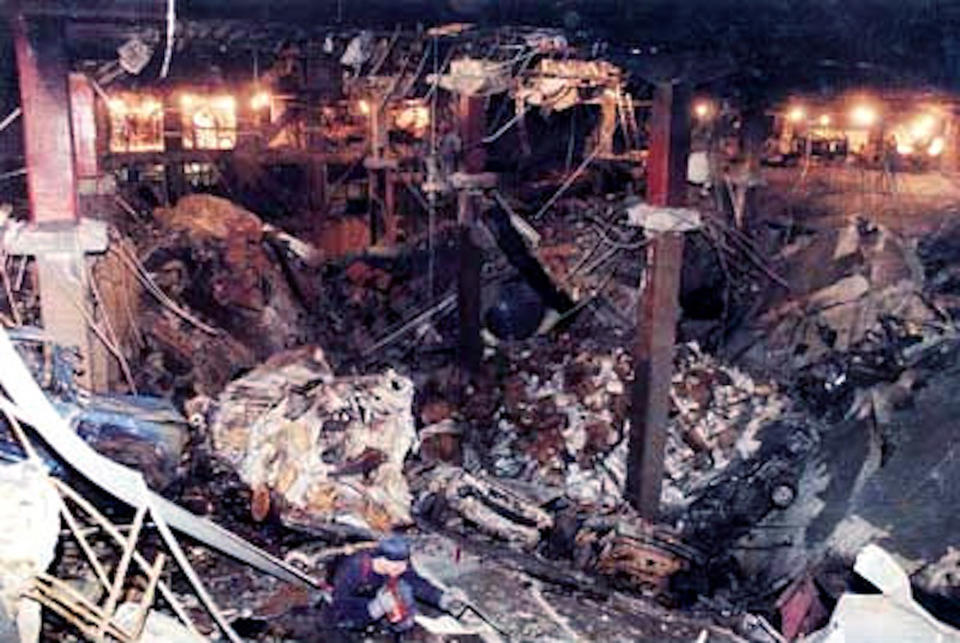
Much of the intelligence community’s focus was on reactive law enforcement activity rather than proactive countering of terrorism. A telling quote from the 9/11 commission report focuses on the lack of a proactive response: “The process was meant, by its nature, to mark for the public as the events finished – case solved, justice done. It was not designed to ask if the events might be harbingers of worse to come. Nor did it allow for aggregating and analyzing facts to see if they could provide clues to terrorist tactics more generally – methods of entry and finance, and mode of operation inside the United States” (Commission Report, p. 73).
Bin Laden had amassed substantial power due to conditions in the Middle East as well as his charismatic leadership, and the US intelligence community was underprepared for a 9/11 style attack. In the aftermath of 9/11, these two factors continued to affect US policy in the Middle East, particularly in Iraq.
Aftermath
The immediate response to 9/11 was the George W. Bush administration’s War on Terror, which began in Afghanistan as a retaliation against al Qaeda for carrying out the attack. The Bush administration soon expanded the War on Terror into Iraq, and the consequences of these wars continue to affect the Middle East to this day. Almost 20 years later, the United States is still at war in both Afghanistan and Iraq.
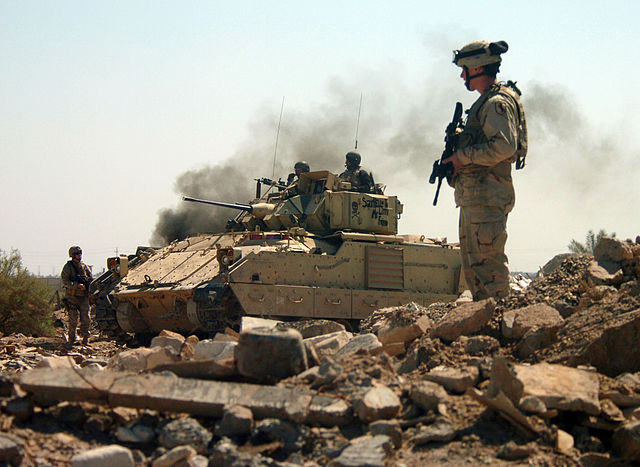
There were domestic long-term effects of 9/11 as well. Thousands of people struggle with cancer and lasting chronic health problems relating to the toxicity from Ground Zero, the site where the Twin Towers used to stand. The September 11 attacks also changed American air travel as airlines began to require stringent security checks designed to prevent the types of weapons the hijackers used from slipping through.
Finally, the 9/11 attacks resulted in changes to the federal government and an expansion of executive power. A new cabinet department, the Department of Homeland Security, was created, and the intelligence community was consolidated under the Director of National Intelligence to improve coordination between various agencies and departments. New legislation such as the USA Patriot Act expanded domestic security and surveillance, disrupted terrorist funding by cracking down on activities such as money laundering, and increased efficiency within the U.S. intelligence community.
The tragedy of September 11, 2001 will never be forgotten, and the aftermath is still continuing to unfold. The 9/11 Memorial and Museum opened on the site of the former World Trade Center on September 11, 2011, and features reflecting pools in the footprints of where the Twin Towers once stood.
